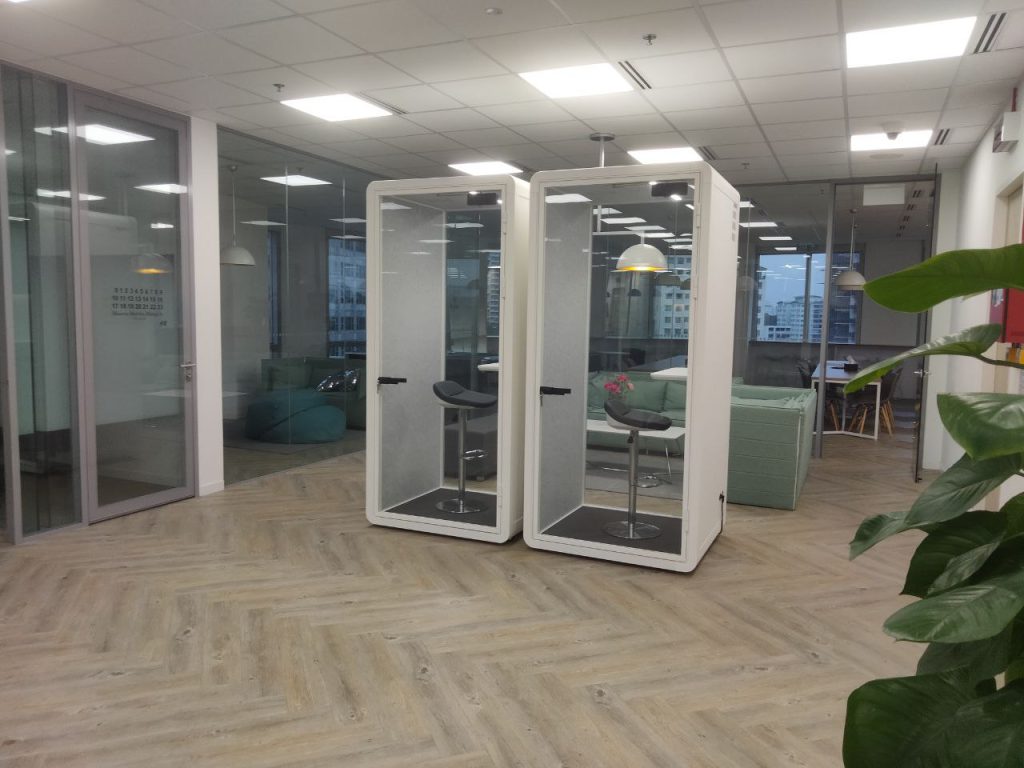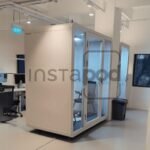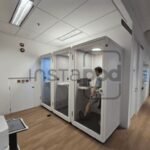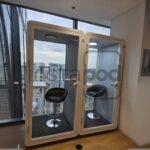No pods added to your quote request yet. Add some now for a free quote!
The Evolution of Office Design: The Rise of the Office Pod

The workplace has undergone significant transformations over the past few decades, with design playing a crucial role in shaping how we work. As companies strive to create environments that foster productivity, creativity, and employee well-being, the evolution of office design has been marked by several key trends. Among the most notable in recent years is the rise of the office pod—a concept that has redefined what it means to have a workspace in the modern office.
The Historical Context: From Cubicles to Open Plans
To understand the significance of the office pod, it’s essential to trace the evolution of office design. In the mid-20th century, the office landscape was dominated by cubicles—small, enclosed spaces that were designed to provide privacy and minimize distractions. However, by the 1990s and early 2000s, the cubicle was increasingly criticized for being isolating and stifling. This led to the rise of the open-plan office, where walls were torn down in favor of large, communal spaces.
The open-plan office was heralded as a way to encourage collaboration and communication. The idea was that by removing physical barriers, employees would be more likely to engage with one another, leading to increased innovation and teamwork. However, as this design became more widespread, its drawbacks also became apparent. Noise levels increased, privacy was diminished, and many employees found it difficult to focus amidst the constant activity. The open-plan office, while effective for some tasks, was not a one-size-fits-all solution.
The Emergence of the Office Pod
Enter the office pod—a modern answer to the challenges posed by both cubicles and open-plan offices. Office pods are small, enclosed spaces that can be installed within an open office environment. They offer a quiet, private area where employees can retreat to focus on work, take calls, or have small meetings without distractions.
The office pod concept gained traction as companies recognized the need for a balance between collaboration and individual focus. Unlike cubicles, which were often permanent and rigid, office pods are usually modular and can be moved or reconfigured as needed. This flexibility allows businesses to adapt their office layouts to changing needs, making office pods a versatile solution for modern workplaces.
Why Office Pods Are Thriving
Several factors have contributed to the rise of office pods as a staple in contemporary office design:
- Privacy and Focus: As mentioned, one of the biggest challenges of open-plan offices is the lack of privacy. Office pods provide a quiet space where employees can concentrate on tasks that require deep focus, such as writing, coding, or brainstorming. This ability to retreat from the hustle and bustle of the main office area can lead to improved productivity and job satisfaction.
- Flexibility: Office pods are often modular, meaning they can be moved or reconfigured with relative ease. This flexibility is particularly valuable for companies that are growing or experiencing changes in their workforce. Instead of committing to a fixed office layout, businesses can use office pods to create spaces that meet their current needs while retaining the ability to adapt in the future.
- Well-being: The design of office pods often takes into account factors that contribute to employee well-being, such as acoustics, lighting, and air quality. Many pods are designed with soundproofing materials to reduce noise levels, while others incorporate natural light or ventilation to create a more comfortable environment. By offering employees a space that is both functional and conducive to well-being, companies can support their team’s mental and physical health.
- Technology Integration: Modern office pods are often equipped with the latest technology, from video conferencing tools to power outlets and USB ports. This makes them ideal for remote work, virtual meetings, or any task that requires a high level of connectivity. As hybrid work models become more common, the ability to seamlessly integrate technology into these spaces will become increasingly important.
- Aesthetic Appeal: Office pods come in a variety of designs, from sleek and minimalist to more traditional or cozy styles. This variety allows companies to choose pods that align with their brand identity and office aesthetic. By offering a visually appealing space, businesses can create an environment that employees are proud to work in, which can enhance morale and company culture.
The Future of Office Design
The rise of the office pod is indicative of a broader trend in office design—one that prioritizes flexibility, well-being, and adaptability. As the workforce becomes more diverse and the demands of work continue to evolve, it’s likely that office pods will play an increasingly important role in the design of the workplace.
In the future, we may see office pods becoming even more advanced, with features like smart technology integration, enhanced acoustics, and customizable interiors. As companies continue to experiment with different layouts and configurations, the office pod will remain a key tool in creating workspaces that are both functional and inspiring.
Ultimately, the evolution of office design reflects the changing nature of work itself. The rise of the office pod is just one example of how businesses are rethinking traditional concepts to create environments that meet the needs of their employees in the 21st century. As the workplace continues to evolve, the office pod will likely remain a central element in the design of spaces that are both productive and enjoyable to work in.
Check these out too!
-
 Can Telephone Booth Replace a Private Office?December 5, 2025/0 Comments
Can Telephone Booth Replace a Private Office?December 5, 2025/0 Comments -
 Soundproof Pod: The Quiet Revolution in Workplace DesignDecember 5, 2025/
Soundproof Pod: The Quiet Revolution in Workplace DesignDecember 5, 2025/ -
 How Acoustic Pods Improve Collaboration & FocusDecember 5, 2025/
How Acoustic Pods Improve Collaboration & FocusDecember 5, 2025/

